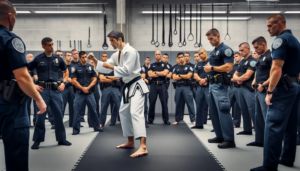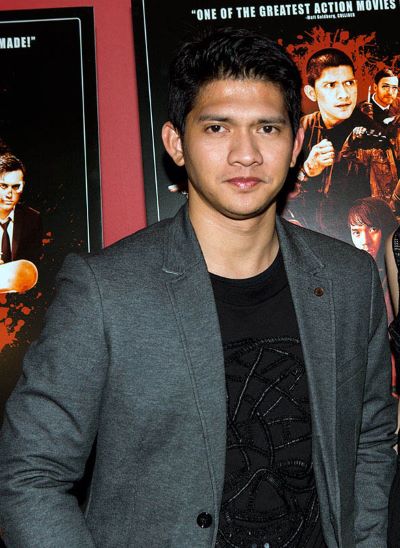
Discover the martial arts mastery of Iko Uwais, the Indonesian sensation who has captivated audiences worldwide with his skill and dedication to the craft.
This article delves into the martial arts he knows, his martial arts background, his martial arts style, the styles of Pencak Silat he practices, his martial arts movies, and his training.
Contents
What Martial Arts Does Iko Uwais Know?
Iko Uwais knows and is renowned for his expertise in Pencak Silat, a traditional Indonesian martial art that stands out for its rich cultural heritage and intricate techniques.
Pencak Silat, often simply referred to as Silat, isn’t just a fighting system but also a spiritual practice, deeply intertwined with the customs and traditions of Indonesia.
It encompasses a wide array of skills, including striking, grappling, joint manipulation, and weaponry, making it an incredibly diverse and adaptable martial art.
Silat is recognized for its fluid, dance-like movements which often mask the deadly efficiency of its combat techniques.
The art form is so revered in Indonesia and Southeast Asia that it has become a significant part of cultural performances and rituals, symbolizing the strength and resilience of the Indonesian people.
Silat is the only martial art Iko Uwais knows and has trained in extensively, but due to his martial arts movie career, Iko has likely had training in kickboxing, karate, Muay Thai, taekwondon, wushu (demonstration), and Brazilian jiu-jitsu.
He uses many techniques from these martial arts when filming, so he likely has a good understanding of each.
Taking a look at some of the actors he has worked with, we can understand what he has learned.
- Michael Jai White – karate, taekwondo, and MMA
- Michael Bisping – MMA
- Tiger Hu Chen – wushu
- Tony Jaa – Muay Thai and Muay Boran
- Scott Adkins – kickboxing, taekwondo, and judo
- JeeJa Yanin: Muay Thai and taekwondo
Overall, it’s easy to see how Iko Uwais is a competent striker. He’s a master in Pencak Silat and has worked alongside plenty of karate and taekwondo martial artists.
Iko Uwais’ Martial Arts Background
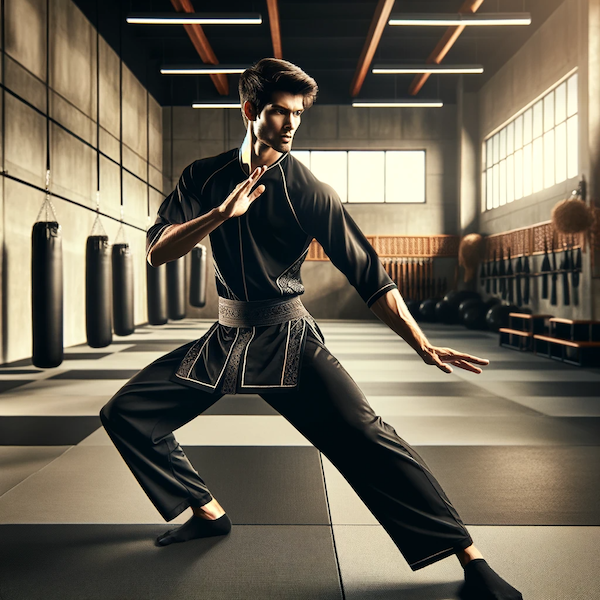
Iko Uwais’ martial arts background began at 10 years old with Pencak Silat. Iko Uwais was influenced by his grandfather, H. Achmad Bunawar, a Silat master and founder of a Silat school.
This early exposure laid the foundation for Uwais’ deep understanding and mastery of Silat.
His mastery of Pencak Silat has been the cornerstone of his fighting style, honed through 30 years of rigorous training and dedication (he’s 40 years old at the time of writing).
His proficiency led him to become the 2005 Indonesian national champion in Silat demonstration, at the age of 22.
Uwais’ proficiency extends beyond Silat, incorporating aspects of other martial arts to create a versatile and dynamic combat style.
What Is Iko Uwais’ Martial Arts Style?
Iko Uwais’ martial arts style is anchored in Pencak Silat and embodies a comprehensive fighting form that is exceptionally suited for martial arts cinema.
His style is characterized by fluid movements, precise strikes, and an emphasis on agility and speed, crucial elements in creating visually captivating and realistic fight scenes.
Pencak Silat is a full-bodied martial art that encompasses strikes, grappling, throwing, and weaponry.
This diversity makes it an ideal base for martial arts movies, providing a wide array of techniques that can be adapted for various cinematic contexts.
The intricacy and intensity of Uwais’ fight choreography, particularly in films like “The Raid,” highlight his ability to integrate Silat’s comprehensive techniques into complex, frenetically-paced fight sequences.
These sequences, known for their length, intricacy, and full-on action, set a high standard in martial arts cinema, blending traditional Silat with a modern cinematic flair.
Additionally, Uwais’ training extends beyond traditional Silat. He practices gymnastics elements like backflips and saltos, adding an acrobatic dimension to his fighting style.
This blend of traditional martial arts with acrobatics enhances the dynamism and appeal of his on-screen action sequences.
His appreciation for the flexibility and movements in other martial arts, such as capoeira and tai chi, further indicates his broad understanding of martial arts, contributing to his well-rounded combat style.
His martial arts style, a hybrid of traditional Silat and elements from other disciplines, is both effective in real-life self-defense scenarios and mesmerizing in choreographed movie scenes.
Here’s a video showing Iko Uwais’ best fight sequences, the majority of which feature Pencak Silat styles and techniques.
What Style of Silat Does Iko Uwais Practice?
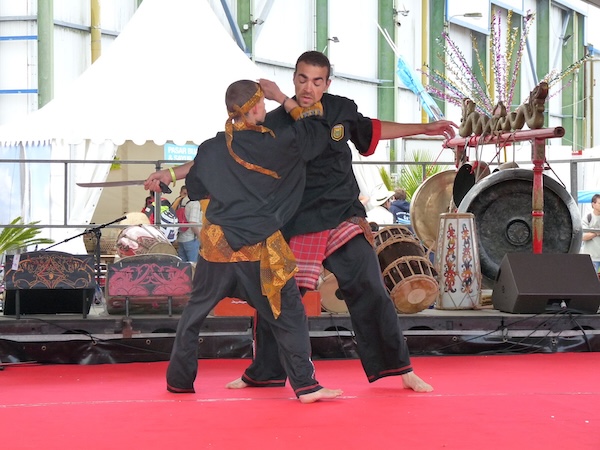
Iko Uwais’ primary training is in Tenaga Dasar, a style distinguished by its focus on internal power and energy management.
This style is characterized by fluid, seamless movements, allowing practitioners to transition smoothly between offensive and defensive techniques, emphasizing efficiency and grace (perfect for his movies).
In preparation for his leading role in “Merantau” (2009), Uwais expanded his Silat repertoire by learning the Minang style of Silat Harimau, or tiger style, from Master Edwel Datuk Rajo Gampo Alam.
This West Sumatran style is known for its agile and low-to-ground movements, resembling the motions of a tiger, and was crucial for authentically portraying his character in the film.
Beyond Tenaga Dasar and Silat Harimau, Uwais’ extensive experience in Pencak Silat likely encompasses familiarity with other styles, given the art form’s diversity across different Indonesian regions. These may include:
- Cimande: A style renowned for its fluid hand movements and evasive footwork, focusing on self-defense.
- Cikalong: Known for its swift and dynamic techniques, this style combines direct strikes with efficient blocks.
- Silek Tuo: One of the oldest forms from West Sumatra, emphasizing ground techniques and lower body strength.
- Pamur: This style uniquely focuses on internal energy, blending soft and hard techniques for a comprehensive approach.
- Merpati Putih: Involving specialized breathing techniques, this style develops inner power alongside physical prowess.
Uwais’ deep understanding of these diverse Silat styles showcases his martial arts mastery and enriches his ability to choreograph authentic and varied fight sequences in his films.
His skill in adapting these styles demonstrates a profound connection to his cultural heritage and a commitment to showcasing the depth and versatility of Pencak Silat on a global platform.
Iko Uwais’ Martial Arts Movies
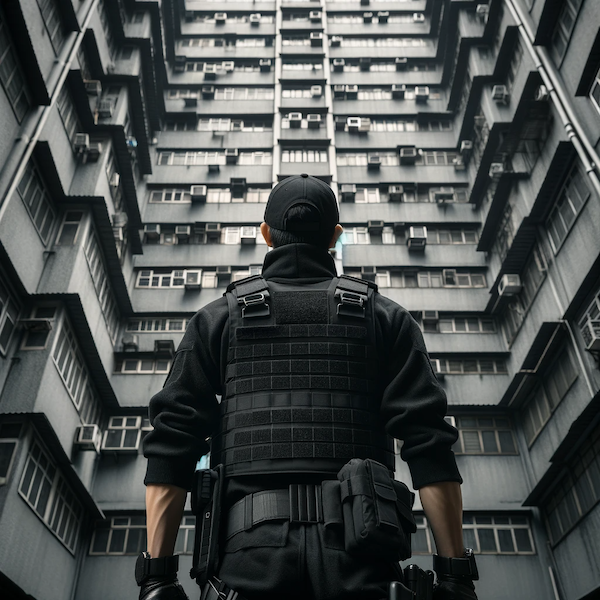
In 2007, during the filming of a documentary on Silat, Welsh filmmaker Gareth Evans came across Iko Uwais at his training facility.
Struck by Uwais’ remarkable screen presence, natural charisma, and evident Silat proficiency, Evans saw potential in the young martial artist.
This encounter led to Uwais being cast as the protagonist, Yuda, in Evans’ martial arts film “Merantau” (2009).
Embracing this new opportunity, Uwais signed a five-year contract with Evans and his production company, transitioning from his regular job to pursue a career in acting.
Since then, he has featured in many martial arts movies. They are:
- Merantau (2009) – Features Pencak Silat, showcasing Uwais’ skill in this traditional Indonesian martial art.
- The Raid: Redemption (2011) – Predominantly Pencak Silat, with high-intensity action and close-quarters combat.
- The Raid 2: Berandal (2014) – A continuation of Silat action, with more diverse martial arts elements incorporated.
- Headshot (2016) – Combines Pencak Silat with other martial arts, focusing on intense fight scenes.
- Triple Threat (2019) – An ensemble action film featuring a mix of martial arts styles, including Muay Thai, Brazilian Jiu-Jitsu, and Chinese martial arts.
- Wu Assassins (2019, Netflix series) – Blends various martial arts, with a strong focus on Silat.
- The Night Comes for Us (2018) – A gritty action film that heavily features Pencak Silat.
- Stuber (2019) – While not a traditional martial arts film, it includes action sequences with elements of Silat.
- Mile 22 (2018) – Features modern combat techniques, including elements of Silat and tactical combat.
Iko Uwais’ Martial Arts Training
To stay ready at all times for roles in martial arts movies, Iko Uwais has to train his martial arts skills and his body.
He weightlifts 2 or 3 times per week, for 2 hours per session. In preparation for his 2022 role in Fistful of Vengeance, Iko Uwais shared his training, which is the same as he performed for the Raid movies.
Iko says he needs “power and speed all of the time”, as well as high cardiovascular endurance.
His training focuses on 3 main factors: endurance, strength body, and agility.
His training is as follows:
1. Endurance Training
- Treadmill – 15 km/h (9.3 mph) for 10 minutes – Iko starts every workout on the treadmill to warm up and get his heart racing.
He believes endurance is most important as a martial arts actor, as the shooting of his fighting sequences can go on for many hours and/or days.
2. Strength Training
- Cable Crossover (3 sets of 20 reps) – chest
- Dumbbell Bench Press (3 sets of 20 reps) – chest, shoulders, and triceps
- Cable Shoulder Press (3 sets of 20 reps) – shoulders and triceps
- Weighted Decline Situp (3 sets of 20 reps) – abs
- Elbow Plank (3 sets of 1-minute holds) – abs
- Hanging Leg Raise (3 sets of 20 reps) – abs
Iko trains his body so that he can develop aesthetics and power in his martial arts techniques.
In this workout, he focuses on hypertrophy (muscle growth) in his chest, shoulders, and abdominals. Lots of ab work helps him build power and balance.
3. Agility Training
- Silat Movements (10 minutes)
- Combo Strike Pad Work (10 minutes)
Iko’s agility training ensures his movement is fluid and fast. This is vital for his martial arts scenes.
Silat movements replicate the fighting style used in his movies, while the pad work improves his striking technique and power.
Here’s the video of his training:



